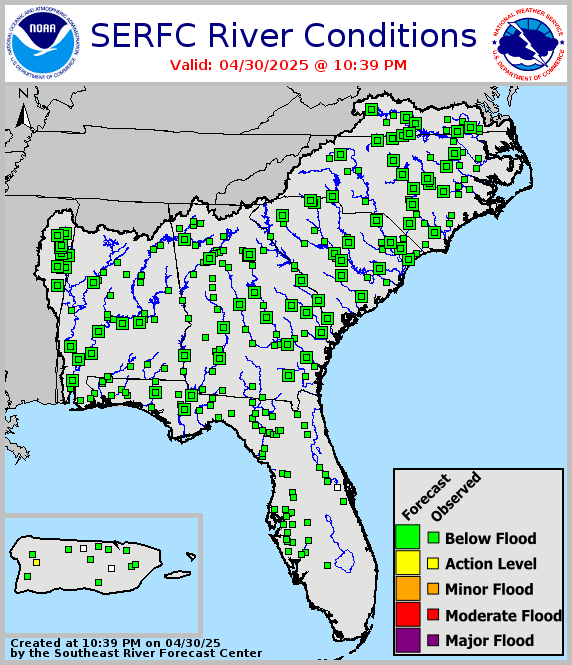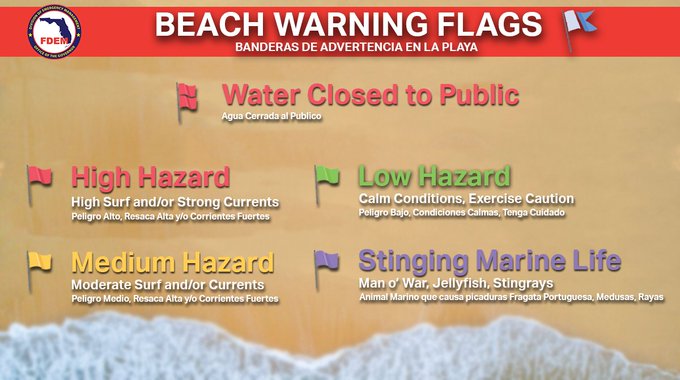Current Weather Outlook
Statewide weather outlook from Florida Division of Emergency Management Meteorology
Saturday, December 27, 2025
...Dense Fog this Morning Gives Way to Pleasant and Dry Conditions as High Pressure Dominates... Partly Cloudy Skies Expected Across North Florida Today, Mostly Sunny Elsewhere... Locally Sensitive Wildfire Conditions in Areas Experiencing Worst Drought... Unseasonably Warm Temperatures Continue Across North Florida... Additional Patchy Dense Fog Likely Across the Panhandle,, Big Bend, and Northeast Florida Overnight; Areas of Patchy Fog Across Central and South Florida As Well... Moderate to High Risk for Rip Currents for Panhandle and East Coast Beaches...
Updated at 09:17 AM EST
Today's Threats:
|
No Threat |
Low Threat |
Medium Threat |
High Threat |
|
Lightning |
Tornado |
Damaging Wind/Hail |
Wildfire |
Freeze (Overnight) |
Fog (Overnight) |
Coastal Flooding |
Rip Currents |
|
Locally North & West-Central FL |
Panhandle & Big Bend North & Central FL Locally South FL |
East-Central FL Panhandle & Northeast FL West Coast |
![]()
Weather Summary for the Next 24 Hours:
A few areas of dense fog have developed across the Panhandle and Big Bend this morning and will linger through the mid-morning hours before dissipating, and Dense Fog Advisories will remain in effect until then. Otherwise, another dry and pleasant day is on tap for the Sunshine State as high pressure remains anchored right over the state. One of the biggest changes today will be a bit more cloud cover across the northern tier of the state with some elevated moisture in the upper-levels of the atmosphere. However, rainfall chances will still remain near zero today with dry conditions prevailing. Given the ongoing warmer and drier conditions, drought may continue to worsen which may lead to locally sensitive wildfire conditions across much of the state today, despite relative humidities remaining above critical thresholds.
High temperatures will climb into the middle to upper 70s across North Florida this afternoon, with a few lower 80s possible. Upper 70s to lower 80s can be expected in Central and South Florida.
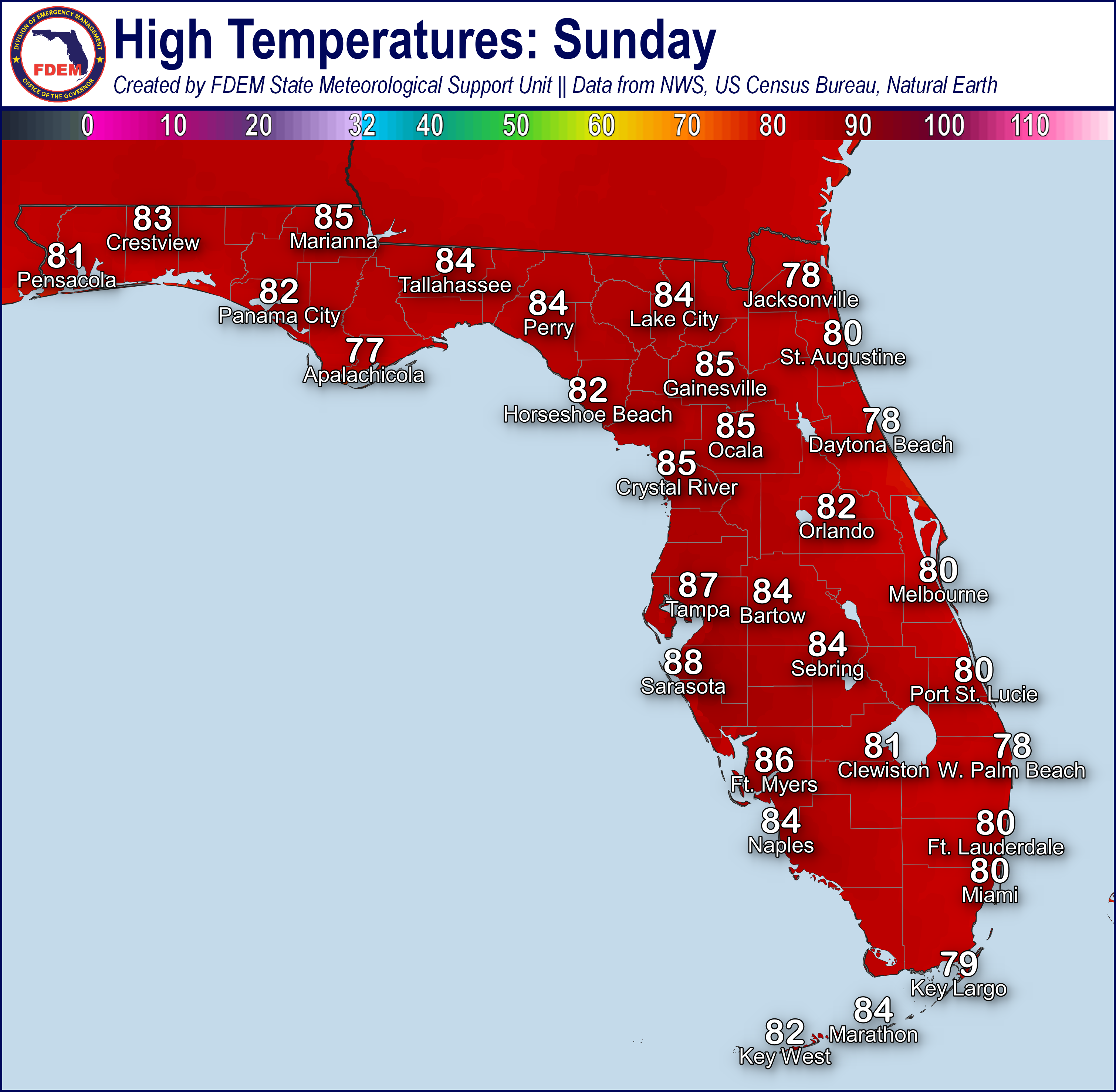
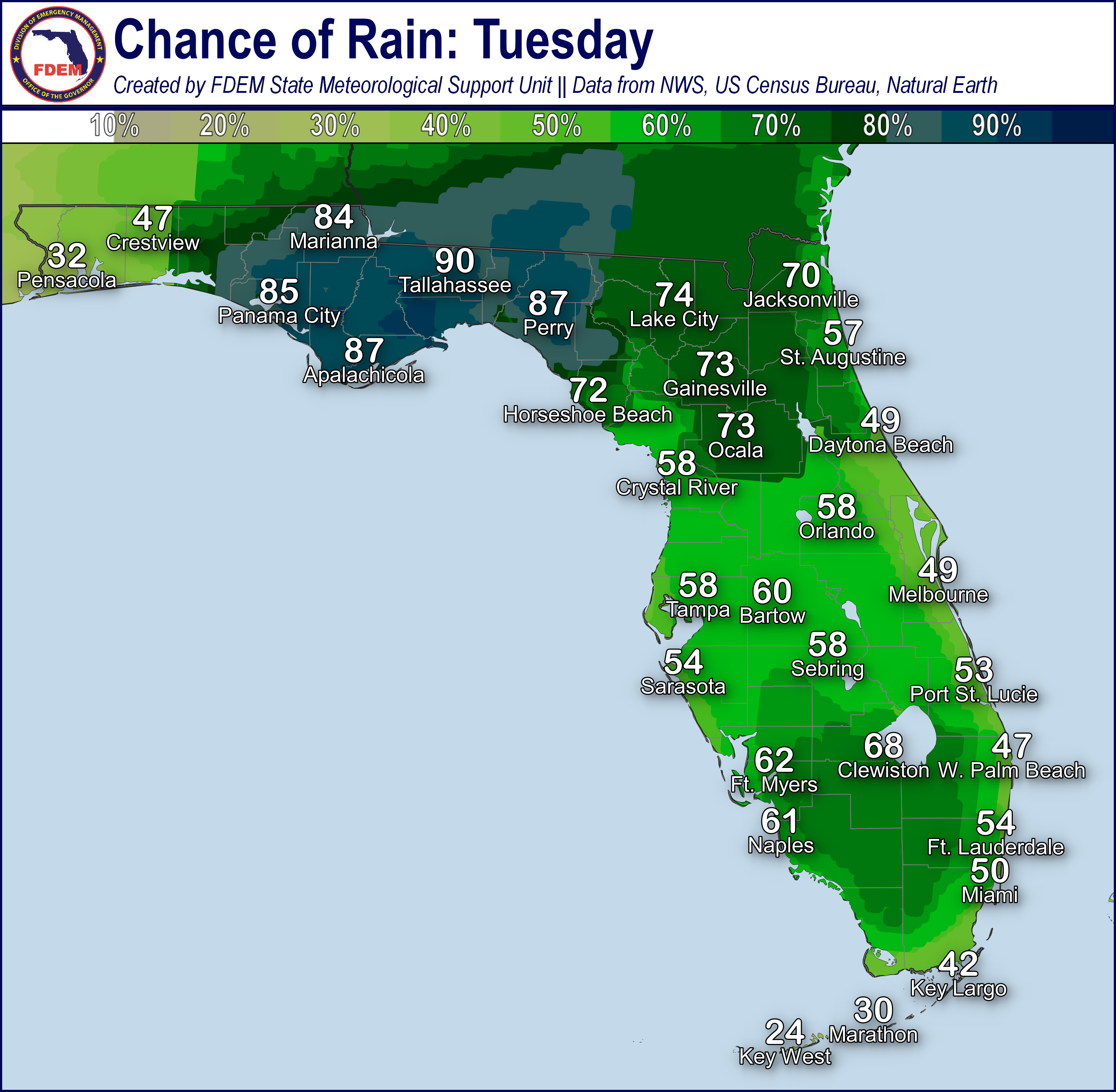
Clear and calm conditions will prevail overnight. Lingering low-level moisture and warmer temperatures will promote another night of low cloud and patchy fog development overnight and towards daybreak Sunday morning. Locally dense fog could develop across much of North and Central Florida and Dense Fog Advisories will be issued as conditions warrant tonight. Please exercise caution if traveling overnight in areas of dense fog, which can reduce visibilities to less than a quarter of a mile.
Low temperatures will dip into the upper 50s to lower 60s nearly statewide tonight, the exception coastal Southeast Florida and the Florida Keys where lows in the middle 60s to lower 70s are expected.
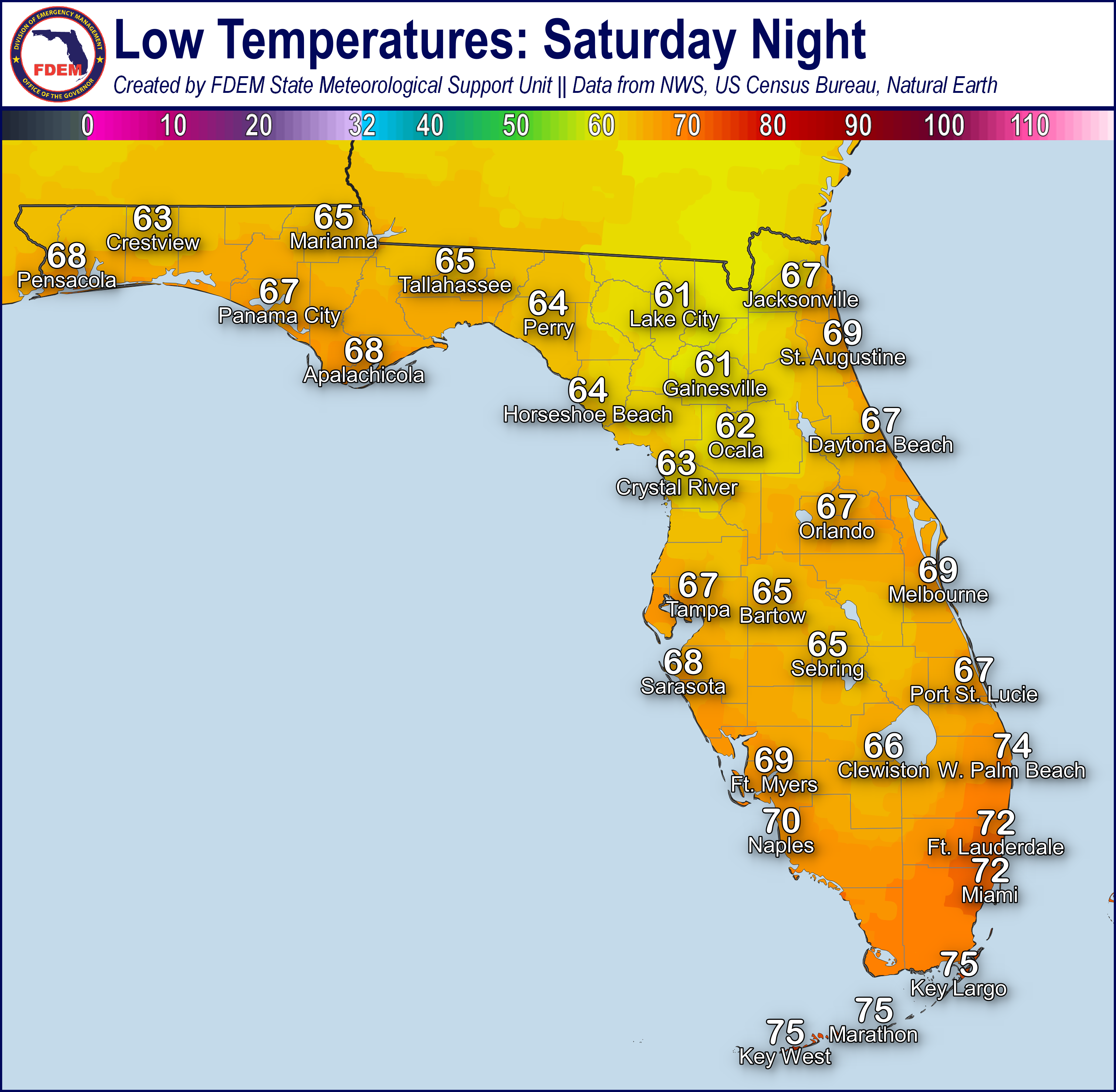
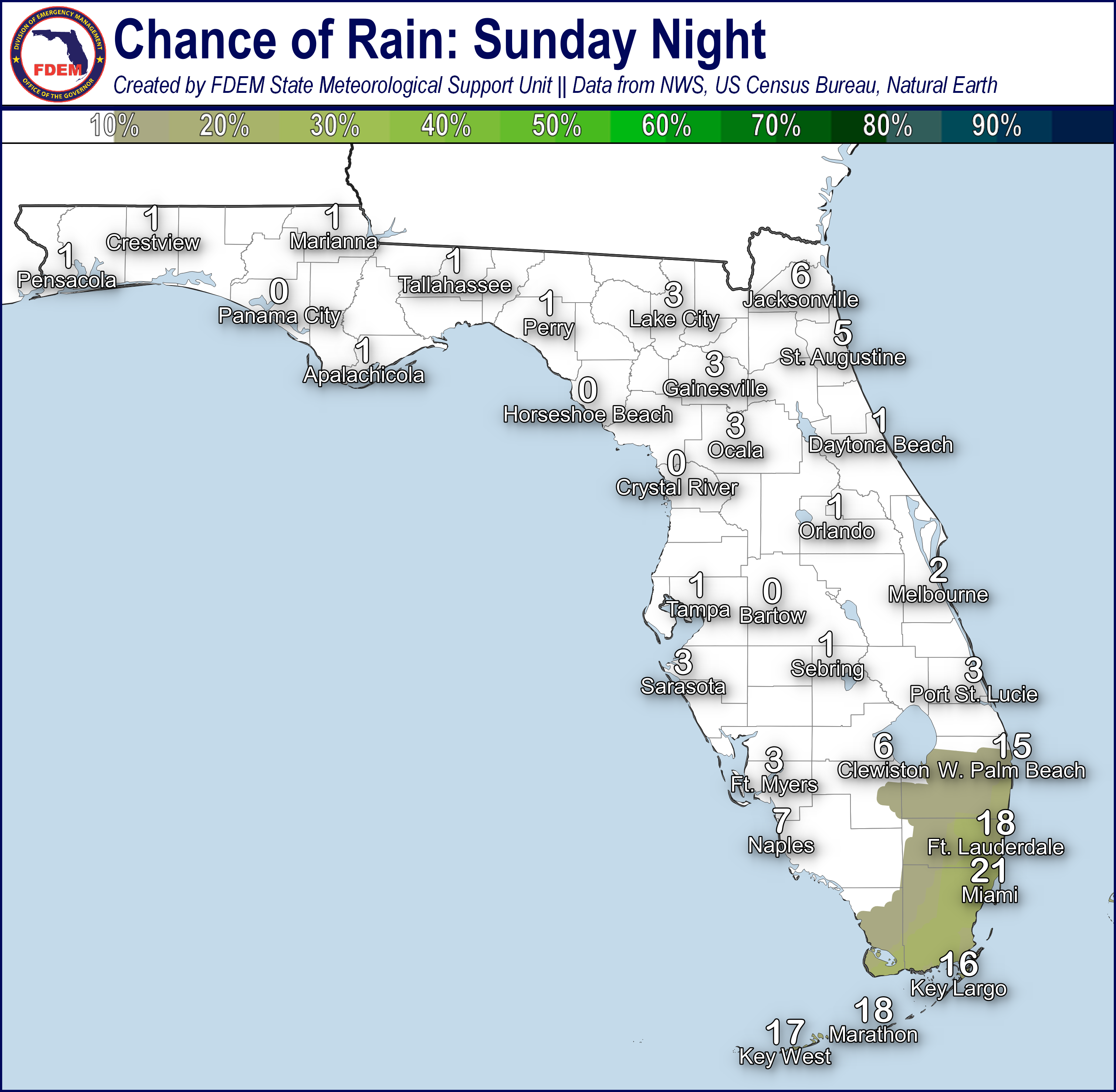
![]()
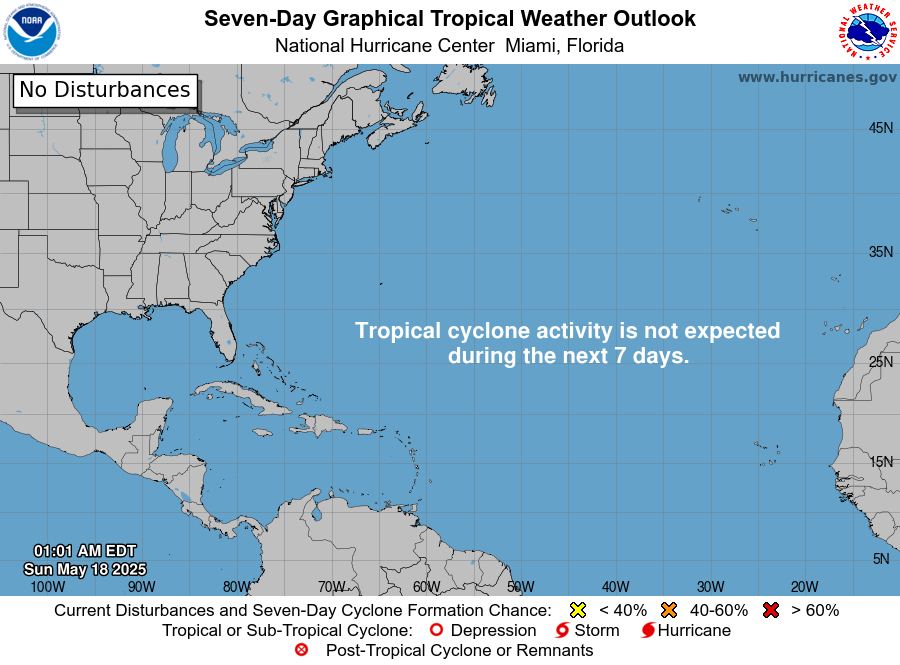
Hurricane season officially runs from June 1 to November 30.
For the latest on the tropics, please visit the National Hurricane Center (NHC) at www.hurricanes.gov.
![]()
Rip Currents: A moderate risk for rip currents can be expected for Panhandle beaches today with some breezy onshore winds. Along the East Coast, a building ocean swell over the local Atlantic waters will bring a high risk for rip currents to all East-Central Florida beaches. A moderate risk can be expected for Northeast Florida and Palm Beach County beaches. A low risk of rip currents will return to West Coast beaches. For the latest Rip Current Outlook, visit www.weather.gov/beach.
Marine Hazards: Surf of 2-3’ can be expected for all East Coast beaches today, with a few waves upwards of 4’ in the surf zone along the Treasure Coast. Southeast Florida will see waves around 1-2’, and Panhandle and West Coast beaches around 1’.
Red Tide was observed at background to medium concentrations in Bay County, very low to low concentrations in Gulf County, and background to very low concentrations in Franklin County. Across Southwest Florida, it was also observed at background concentrations offshore Hillsborough County. Red Tide was not observed along the Florida East Coast (valid 12/23).
Coastal Flooding: There is no risk for coastal flooding across Florida.
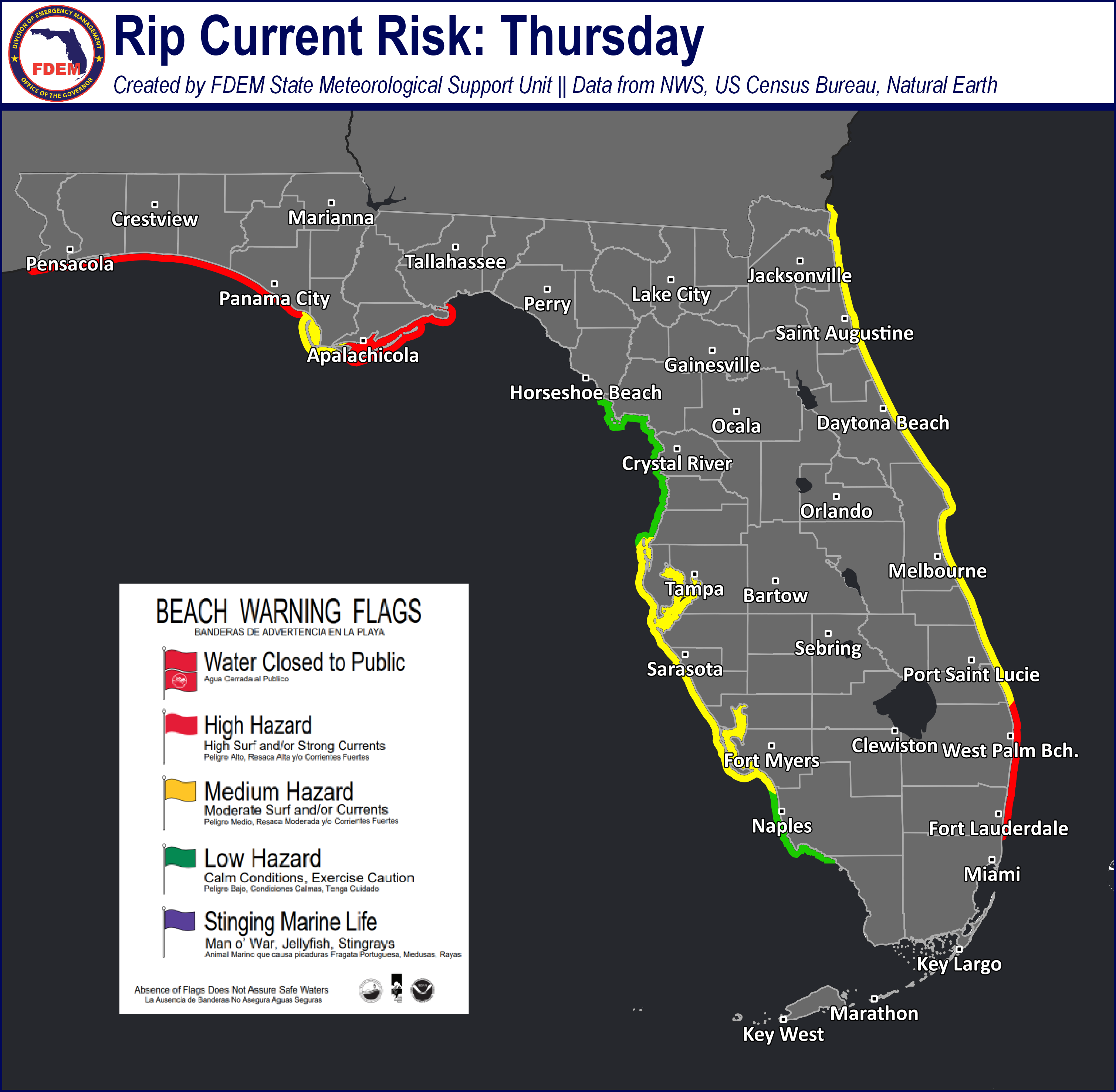
![]()
Fire Weather: Another dry day is on tap for the Sunshine State outside of coastal Southeast Florida where a brief sprinkle or coastal shower is possible. Despite relative humidities remaining above critical thresholds, warm and dry conditions will continue to promote locally sensitive wildfire conditions, especially in areas experiencing the worst long-term drought. Additionally, patchy fog and low clouds, which could be locally dense, may develop across the Panhandle and Big Bend tonight which can reduce visibilities further in any active fire regions. According to the Florida Forest Service, there are 24 active wildfires across the state burning approximately 163 acres.
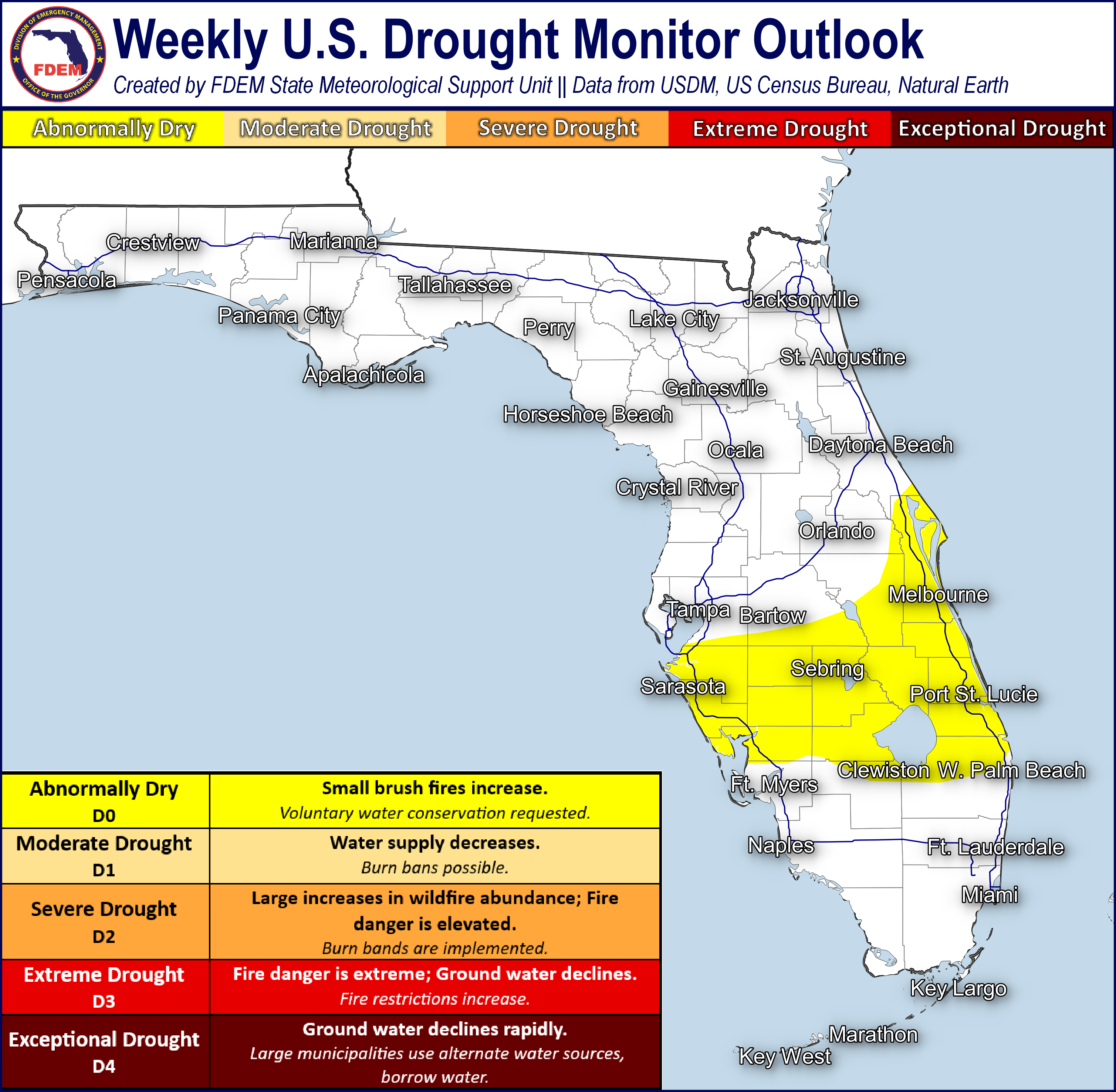
Drought (12/24): Over the past two weeks, much of the Florida Peninsula has seen little in the way of rainfall outside of immediate coastal Southeast Florida where rainfall totals have only added up to 1-2”. As such, drought has expanded for parts of South and Central Florida on this weeks latest Drought Monitor outlook. A Moderate Drought (level 1 of 4) has been expanded north of Lake Okeechobee to include all of Highlands, Okeechobee, and interior Martin and St. Lucie counties. Over the last two weeks, these areas have seen nearly zero rainfall which has been exacerbated by warmer than normal temperatures for this time of year. A similar story is ongoing along coastal West-Central Florida where the Severe Drought (level 2 of 4) has also been expanded to include all interior Hardee and DeSoto counties, as well as southwest Polk county. The long-term (60 to 90 day) drought in these areas continues to worsen, with many areas between 6-8” below normal rainfall over the past two to three months. The Nature Coast has also seen a lack of rainfall in the long-term, with coastal Levy, Citrus, Hernando and Pasco counties under a Severe Drought (level 2 of 4) with rainfall departures around 3-4” below normal over the past 2 months. Moderate Drought (level 1 of 4) has also been expanded away from the coast to include the interior counties of Sumter, Marion, and Putnam in Northeast Florida where similar rainfall departures over the past 2-3 months are found. Abnormally dry (emerging drought) has been introduced too all East-Central Florida, bringing 99% of the entire state of Florida under at least some classification of drought. Across North Florida and the Panhandle, very little changes were made to this week’s outlook. An Extreme Drought (level 3 of 4) remains in place over Liberty, Gadsden, Leon, Wakulla, and Jefferson counties with a Severe Drought (level 2 of 4) surrounding that. A Moderate Drought (level 1 of 4) occupies the rest of the I-10 corridor across the Panhandle and Northeast Florida. Very little meaningful rainfall is expected over the next week which will likely bring persistence, or worsening, drought levels on next weeks outlook. Although some water levels improved from recent rainfall over North Florida, dry conditions will begin to bring those back down slowly below normal levels.
The Keetch-Byram Drought Index average for Florida is 451 (+5) on a scale from 0 (very wet) to 800 (very dry). There are 26 Florida counties that have an average KBDI above 500 (drought/increased fire danger).
![]()
Flash Flooding: There is no organized risk for flash flooding today.
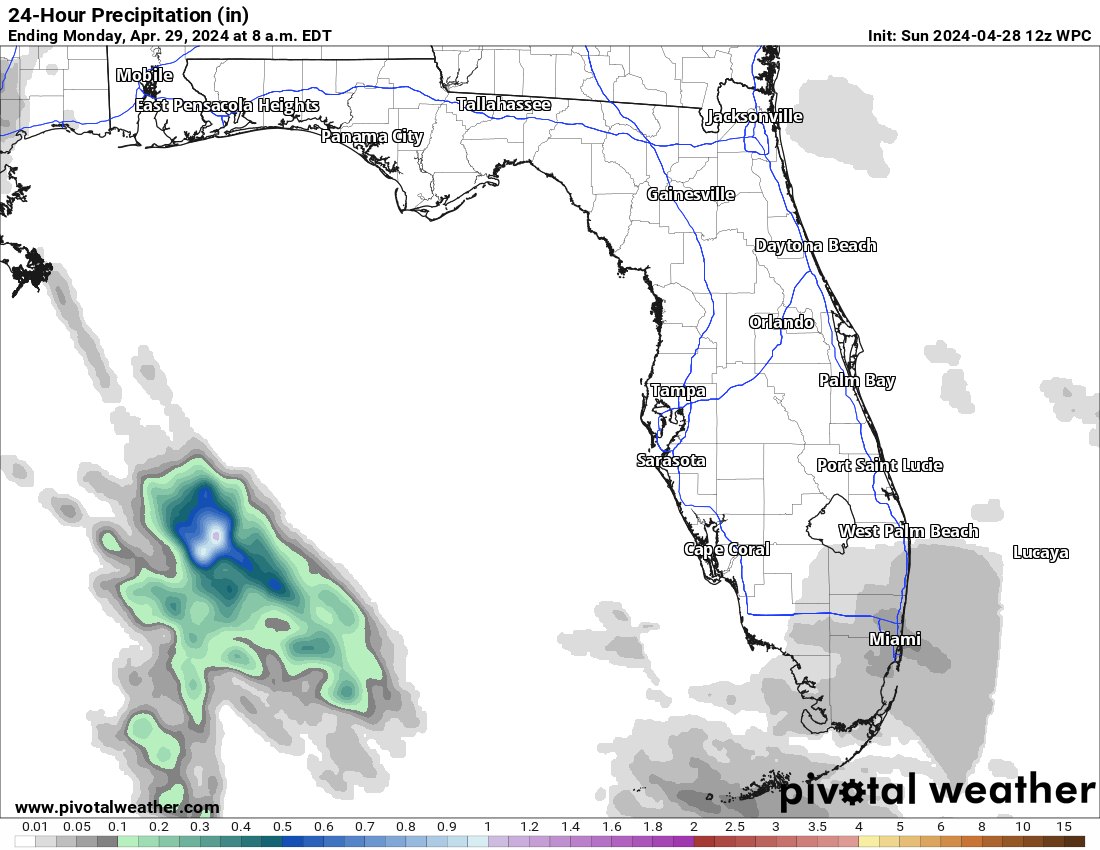
Riverine Flooding: There are no riverine concerns across Florida. For more information, visit the River Forecast Center.
Lake Okeechobee’s average elevation is 13.47 feet, which is within the operational band and is 1.20 feet below normal for this time of year.
